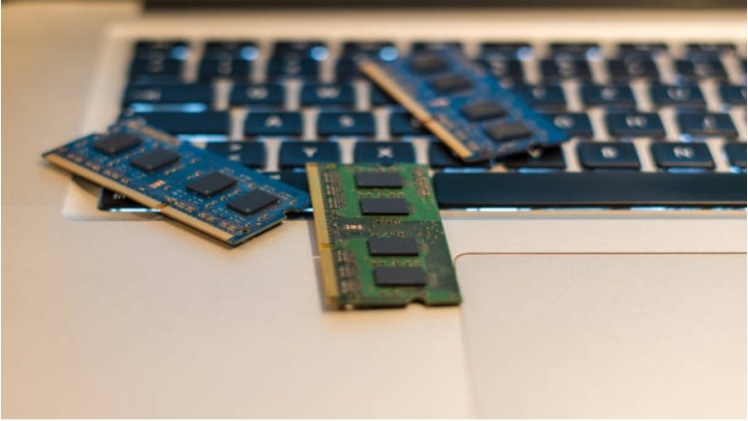In the ever-evolving realm of technology, integrated circuits (ICs) play a pivotal role as the backbone of electronic devices. From smartphones to sophisticated medical equipment, these minuscule marvels power the gadgets that have become an integral part of our daily lives. The intricate design of integrated circuits is a fascinating journey into the world of microelectronics, where seemingly insignificant dots connect to create the complex circuitry that powers our modern world.
Understanding Integrated Circuits
At its core, an integrated circuit is a compact arrangement of interconnected electronic components, such as transistors, resistors, and capacitors, fabricated onto a single piece of semiconductor material. This miniature electronic wonder performs a multitude of functions, from amplifying signals to processing data. To comprehend the intricacies of their design, let’s break down the process into key components and stages.
1. Semiconductor Substrates
Integrated circuits are typically crafted by electronic parts supplier on semiconductor substrates, commonly made of silicon. Silicon’s unique properties, such as its high conductivity and ability to function as a semiconductor, make it an ideal material for IC fabrication. The semiconductor wafer, usually thin and circular, acts as the canvas on which the electronic masterpiece will be painted.
2. Transistors: The Building Blocks
At the heart of integrated circuits lie transistors, the fundamental building blocks that amplify and control electronic signals. These tiny switches control the flow of electrical current, and their arrangement determines the functionality of the circuit. The miniaturization of transistors is a testament to the constant evolution of technology, as manufacturers strive to pack more power into smaller spaces.
3. Layers and Metallization
The creation of an integrated circuit involves layering different materials on the semiconductor substrate. Insulating layers separate the various components, preventing unintended interactions. Metallization, a crucial step, involves depositing metal traces to connect different parts of the circuit. This meticulous process ensures that the circuit functions as intended without interference.
4. Photolithography: Precision on a Microscopic Scale
Photolithography is a key technique in the production of integrated circuits, enabling manufacturers to transfer intricate circuit patterns onto the semiconductor substrate. This process involves the use of light to etch patterns onto a photosensitive material, creating a stencil that guides subsequent material deposition and removal steps. The precision required in photolithography is mind-boggling, with features measured in nanometers.
The Design Process: Connecting the Dots
The design of integrated circuits is a meticulous process that requires a deep understanding of electrical engineering, physics, and materials science. The ic chip supplier use sophisticated software tools to conceptualize, simulate, and refine the circuit layout before it goes into production. Here’s a glimpse into the intricate design process:
1. Conceptualization
The journey begins with a concept – a vision of the circuit’s purpose and functionality. Designers outline the specifications, considering factors like power consumption, speed, and size. This stage involves making critical decisions that will shape the circuit’s architecture.
2. Circuit Simulation
Once the concept is established, designers employ simulation tools to model the circuit’s behavior. This virtual testing ground allows them to identify potential issues, optimize performance, and make informed design choices before committing to physical production.
3. Layout Design
The layout design phase involves arranging the circuit components on the semiconductor substrate. Designers must consider factors like signal integrity, thermal management, and power distribution. The goal is to create an efficient layout that meets performance requirements while adhering to the constraints of the manufacturing process.
4. Verification and Testing
Before moving to the manufacturing stage, the designed circuit undergoes rigorous verification and testing. This includes checks for functionality, reliability, and adherence to specifications. Any discrepancies are addressed, ensuring that the final product meets the desired standards.
Challenges in Integrated Circuit Design
Designing integrated circuits is not without its challenges. As technology advances, designers face the daunting task of packing more components into smaller spaces while maintaining reliability and performance. The race for smaller transistors and higher processing speeds pushes the limits of physics and manufacturing capabilities.
1. Shrinking Transistors
The relentless pursuit of smaller transistors poses a significant challenge. As transistors approach atomic scales, quantum effects come into play, introducing uncertainties that designers must navigate. This demands innovations in materials and manufacturing processes to maintain the reliability of these microscopic switches.
2. Heat Management
As circuits become more densely packed, managing heat becomes a critical concern. Excessive heat can degrade performance and reduce the lifespan of electronic components. Designers must incorporate effective heat dissipation techniques, such as advanced cooling systems and materials, to address this challenge.
3. Power Consumption
With the increasing prevalence of portable and battery-powered devices, minimizing power consumption is paramount. Designers strive to create energy-efficient circuits, optimizing every aspect of the design to strike a balance between performance and power efficiency.
The Future of Integrated Circuit Design
The future of integrated circuit design is an exciting frontier with promising innovations on the horizon. Emerging technologies, such as quantum computing and neuromorphic computing, are challenging traditional paradigms and opening new possibilities. Quantum processors, leveraging the principles of quantum mechanics, have the potential to revolutionize computing by solving complex problems at speeds unattainable by classical computers.
Neuromorphic computing, inspired by the human brain’s architecture, aims to create circuits that mimic the brain’s parallel processing capabilities. This could lead to the development of artificial intelligence systems with unprecedented efficiency and adaptability.
Conclusion
In conclusion, the intricate design of integrated circuits is a testament to human ingenuity and technological progress. From the early days of bulky vacuum tubes to today’s nanoscale transistors, the evolution of integrated circuits has been a remarkable journey. As designers continue to connect the dots in ever more creative ways, the future holds the promise of even smaller, more powerful, and energy-efficient electronic marvels that will shape the next era of technological innovation.


